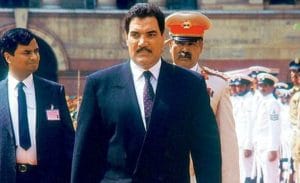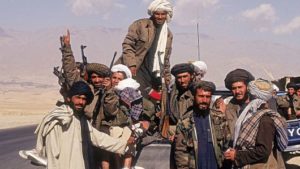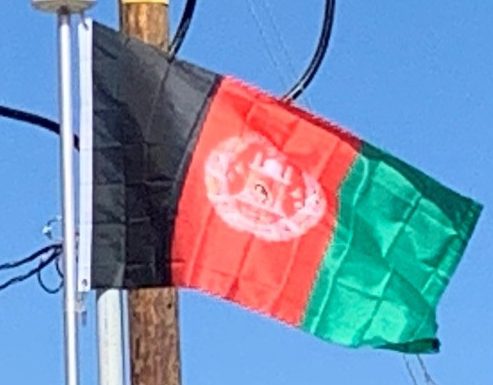President Najibullah therefore tried to build support for his government by moving away from socialism to pan-Afghan nationalism, abolishing the one-party state, portraying his government as Islamic, and in 1990 removing all signs of communism.
Nevertheless, Najibullah did not win any significant support. In March 1989, two mujahideen groups launched an attack on Jalalabad, instigated by the Pakistani Inter-Services Intelligence (ISI) who wanted to see a mujahideen Islamic government established in Afghanistan, but the attack failed after three months. With the dissolution of the Soviet Union in December 1991 and the ending of Russian support, President Najibullah was left without foreign aid. In March 1991, mujahideen forces attacked and conquered the city of Khost.

In March 1992, President Najibullah agreed to step aside and make way for a mujahideen coalition government. Mujahideen leaders came together in Peshawar, Pakistan, to negotiate such a government, but mujahideen Hezbi Islami’s leader Gulbuddin Hekmatyar, presumably supported by ISI, refused to meet other leaders. On 16 April 1992, four Afghani government Generals ousted President Najibullah. Little later, Hezbi Islami invaded Kabul. This ignited war in Kabul on 25 April with rivalling groups Jamiat and Junbish in which soon two more mujahideen groups mingled; all groups except Jamiat were supported by an Islamic foreign government (Saudi Arabia, Iran, Uzbekistan) or intelligence agency (Pakistan’s ISI). In 1992–95, Kabul was heavily bombarded and considerably destroyed, by Hezbi Islami, Jamiat, Junbish, Hizb-i-Wahdat, and Ittihad; in that period, half a million Kabuli fled to Pakistan. In January–June 1994, 25,000 people died in Kabul due to fighting between an alliance of Dostum’s (Junbish) with Hekmatyar’s (Hezbi Islami) against Massoud’s (Jamiat) forces.
In 1993–95, (sub-)commanders of Jamiat, Junbish, Hezbi Islami and Hizb-i-Wahdat descended to rape, murder and extortion. The Taliban emerged in September 1994 as a movement and militia of Pashtun students from Islamic madrassas in Pakistan, pledged to rid Afghanistan of ‘warlords and criminals’, and soon had military support from Pakistan. In November 1994 the Taliban took control of Kandahar city after forcing local Pashtun leaders who had tolerated complete lawlessness. The Taliban in early 1995 attempted to capture Kabul but were repelled by forces under Massoud. Taliban, having grown stronger, in September 1996 attacked and occupied Kabul after Massoud and Hekmatyar had withdrawn their troops from Kabul.
Taliban Emirate and Northern Alliance:
In late September 1996, the Taliban, in control of Kabul and most of Afghanistan, proclaimed their Islamic Emirate of Afghanistan. They imposed a strict form of Sharia, similar to that found in Saudi Arabia. According to Physicians for Human Rights (PHR) in 1998, “no other regime in the world has methodically and violently forced half of its population into virtual house arrest, prohibiting them on pain of physical punishment from showing their faces, seeking medical care without a male escort, or attending school”. The brutality of the Taliban’s totalitarian regime was comparable to those of Stalin’s Russia or the Khmer Rouge rule of Cambodia.

After the fall of Kabul to the Taliban, Massoud and Dostum formed the Northern Alliance. The Taliban defeated Dostum’s forces during the Battles of Mazar-i-Sharif (1997–98). Pakistan’s Chief of Army Staff, Pervez Musharraf, began sending thousands of Pakistanis to help the Taliban defeat the Northern Alliance. From 1996 to 2001, the al-Qaeda network of Osama bin Laden and Ayman al-Zawahiri was also operating inside Afghanistan. This and the fact that around one million Afghans were internally displaced made the United States worry. From 1990 to September 2001, around 400,000 Afghans died in the internal mini-wars.
